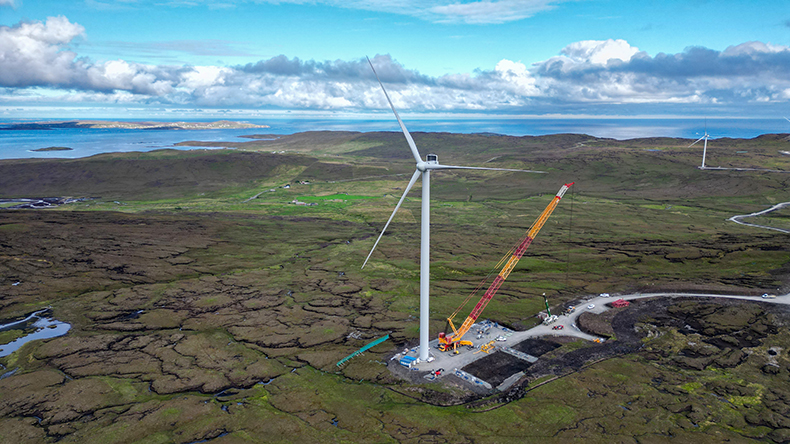The Shetland Islands have been connected to the Great Britain electricity grid for the first time following the completion of a new wind farm and a 260km subsea transmission link. SSE, the energy company behind the project, hailed this achievement as a “groundbreaking milestone for clean energy in the UK.”
The Viking Wind Farm, featuring 103 turbines, boasts an installed capacity of 443 megawatts (MW), which is sufficient to power approximately 500,000 homes annually. The subsea cable, a high-voltage direct current (HVDC) link, will facilitate the transfer of electricity generated in the Shetland Isles to the rest of the UK. Additionally, it will enable electricity to be sent back to Shetland, ensuring a reliable power supply for the islands.
These two projects represent a £1 billion investment by SSE, part of the company’s broader £20.5 billion commitment to UK clean energy infrastructure by 2027. The completion of the wind farm and transmission link is a significant step in harnessing the renewable energy potential of the Shetland Islands, according to Scotland’s First Minister, John Swinney.
“The completion of these projects is a significant step in unlocking the green energy potential of the Shetland Islands,” Swinney said. “These developments will not only aid us in our efforts to decarbonize our energy system but also help stimulate sustainable economic growth in the local area.”
The Viking Wind Farm is poised to become one of the UK’s most productive onshore wind farms. At its peak, the construction phase supported around 650 jobs and contributed £125 million to the Shetland economy. The ongoing operations are expected to sustain 35 permanent roles and generate more than £70 million for the local economy over the wind farm’s lifetime.
SSE’s chief executive, Alistair Phillips-Davies, emphasized the importance of these projects in the UK’s transition to a clean energy future. “Delivery of both the Viking Wind Farm and Shetland HVDC transmission link are big engineering achievements and together represent a major milestone on the UK’s path to a clean energy system,” Phillips-Davies said. “Shetland and the wider North Sea have long supported the country’s energy security, and now they are playing a significant role in decarbonizing our power system.”
The new wind farm adds a significant capacity to the UK’s renewable energy portfolio, bringing the combined onshore and offshore wind capacity to over 30GW, enough to meet the annual power needs of approximately 26 million homes. The projects are expected to reduce carbon emissions by more than 35 million tonnes annually, underscoring the UK’s commitment to a clean energy future.
However, Phillips-Davies noted the lengthy timeline for bringing such projects to fruition and called for more streamlined processes to meet the UK’s 2030 clean power goals. “It has taken nearly two decades for these projects to move from concept to completion, and if we are serious about delivering clean power by 2030, we need to make it much easier and faster to build this kind of mission-critical infrastructure,” he added.



